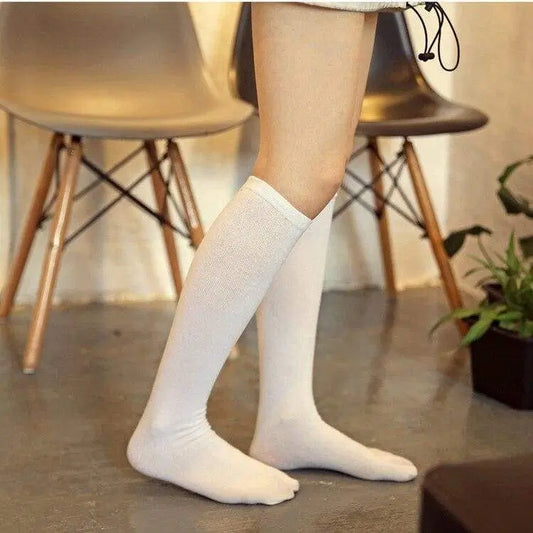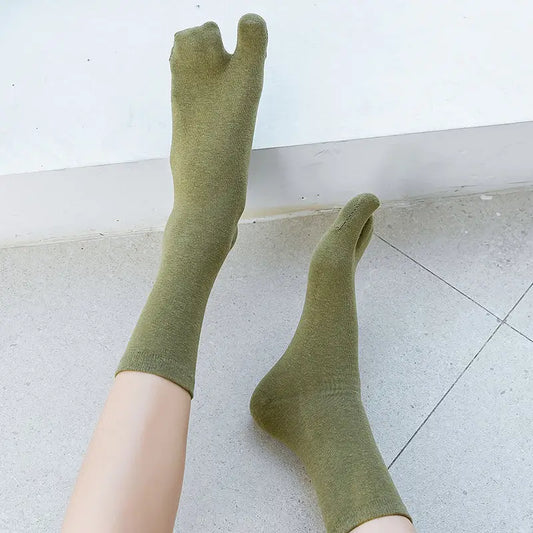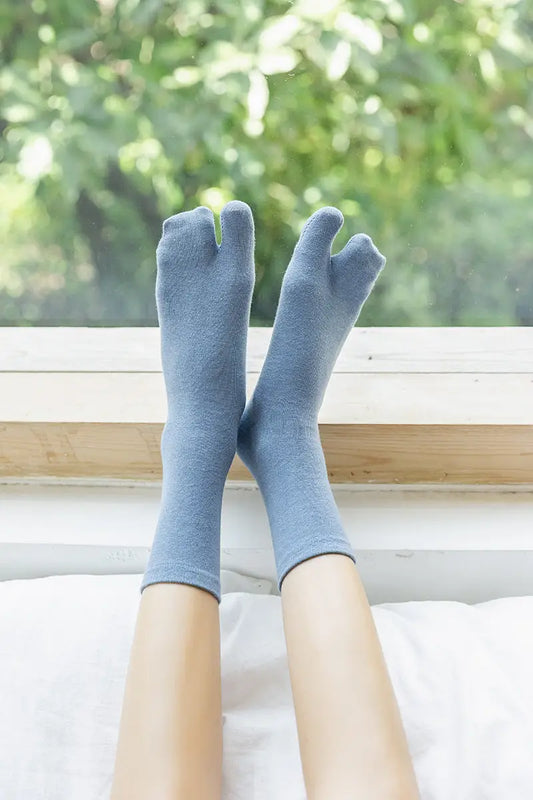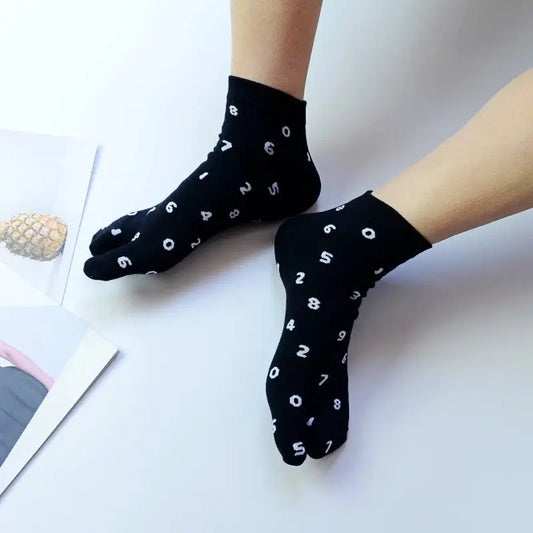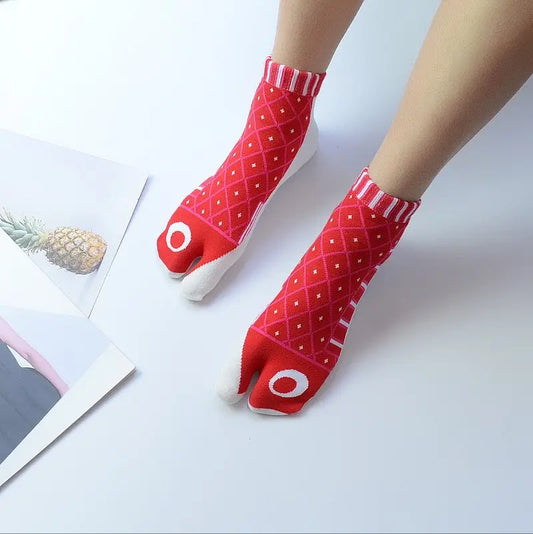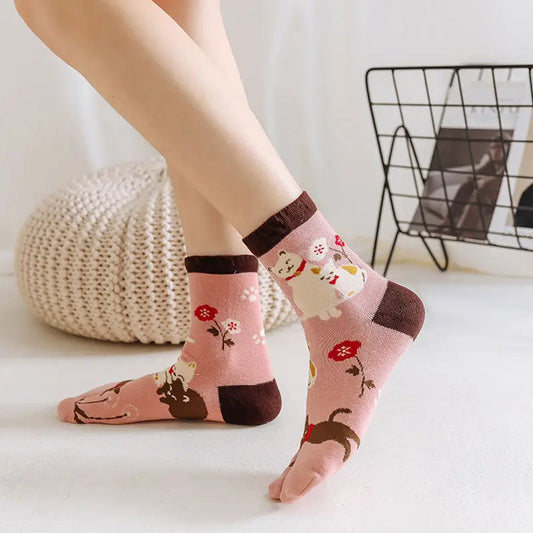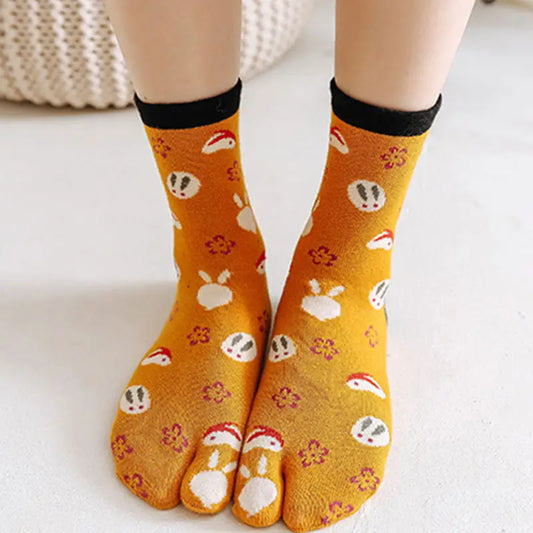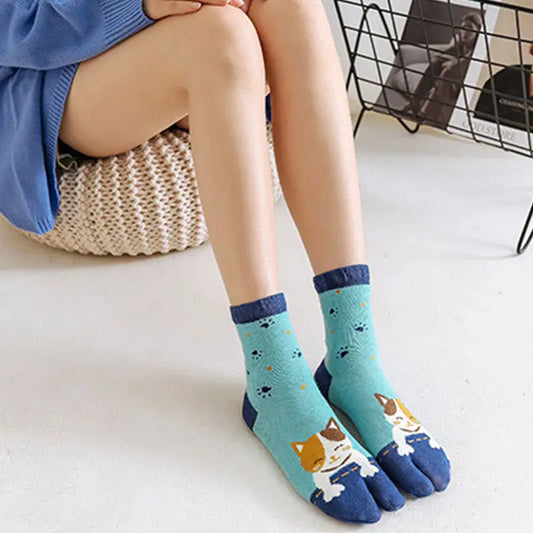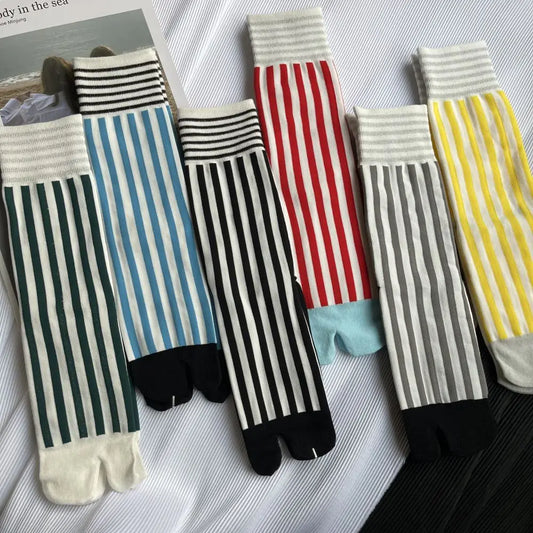Step Into Heritage: Discover the World of Tabi Socks
Welcome to the ultimate destination for Tabi Socks — where ancient tradition meets modern flair. If you're looking to elevate your footwear game with something that's more than just socks, you're in the right place. Tabi Socks are a remarkable fusion of Japanese culture, ergonomic design, and trendsetting style. Whether you're a long-time devotee of Japanese fashion or just dipping your toes (literally) into the world of split-toe socks, prepare to be enchanted. These aren't your everyday socks; they are a conversation starter, a fashion statement, and a tribute to centuries-old craftsmanship.
Originally worn with traditional Japanese footwear such as zori and geta, Tabi Socks have evolved into an essential accessory in the wardrobes of fashion lovers across the globe. Their iconic split-toe design not only reflects their cultural roots but also offers a level of comfort and utility that standard socks simply can't match. As you browse our exclusive collection, you'll find everything from minimalist monochrome pairs to vibrantly patterned designs that pop with personality.
So whether you're styling a kimono, aiming for a streetwear look, or simply want socks that support both function and fashion, Tabi Socks offer the perfect solution. Dive in and explore a world where comfort, culture, and creativity come together.
Tabi Socks Through Time: A Journey of Tradition and Innovation
Tabi Socks hold a rich and storied place in Japanese history, dating back to the 15th century. Originally developed for members of the samurai class and upper society, these unique socks were designed to be worn with thonged footwear. The term "tabi" (written as 袖 in kanji) translates to "foot bag," an apt description of their utilitarian and form-fitting nature. Unlike Western socks, Tabi Socks feature a distinct separation between the big toe and the rest of the foot, a design inspired by the needs of traditional footwear and deeply ingrained cultural practices.
As Japan's sartorial landscape evolved, so did the design and fabric of Tabi Socks. From their origins in leather for outdoor wear to the widespread use of cotton and other natural fibers for indoor use, Tabi became both a practical item and a symbol of etiquette. In Edo-period Japan, wearing pristine white Tabi Socks was a sign of cleanliness and refinement. With the modernization of the country in the Meiji era and beyond, these socks began to transition from purely functional attire to a broader cultural icon.
Today, Tabi Socks are more than just a cultural relic — they are a fashion-forward choice embraced by people of all ages and styles. Brands around the world have taken inspiration from the traditional design, incorporating contemporary colors, fabrics, and patterns that resonate with today's diverse fashion community. Despite these modern influences, the essence of Tabi Socks remains rooted in Japanese aesthetics: harmony, simplicity, and purpose.
| Historical Era | Sock Material | Social Significance |
|---|---|---|
| Muromachi | Leather | Practical for war footgear |
| Edo | Cotton | Cleanliness & etiquette |
| Meiji | Mixed fabrics | Western influence begins |
| Modern Day | Cotton, silk, synthetics | Fashion & function |
This blend of legacy and modernity makes Tabi Socks a unique addition to any wardrobe. By choosing Tabi, you're not just picking out socks — you're honoring centuries of cultural innovation.
Why Tabi Socks Are a Game-Changer
Tabi Socks aren't just visually distinct; they're ergonomically superior and culturally expressive. First and foremost, the split-toe design improves balance and posture, making them an excellent choice for activities that require groundedness like yoga, martial arts, or even long walks. By naturally aligning the foot, they help distribute body weight more evenly, potentially reducing foot fatigue over time.
Another game-changing feature of Tabi Socks is their breathability. Most modern versions are made from high-quality cotton blends that wick away moisture while allowing your feet to breathe. This makes them ideal for both hot and cold weather, as they regulate temperature and reduce sweat-related discomfort. Their form-fitting structure also ensures they don’t bunch up, slide down, or lose shape after extended wear.
From a fashion standpoint, Tabi Socks are incredibly versatile. Whether you're wearing them with traditional Japanese footwear, pairing them with minimalist sandals, or layering them under boots for a surprise detail, they always add an unexpected edge. Their unique silhouette stands out in a crowd, turning even the most basic outfit into a style statement.
Let's not overlook the artistic element. Many Tabi Socks feature intricate designs — from ukiyo-e inspired waves to contemporary pop art graphics. This allows wearers to express their personality and tastes in a subtle yet striking way. Each pair becomes a canvas for creativity, blending comfort with storytelling.
| Feature | Benefit |
| Split-toe design | Improved balance and posture |
| Breathable fabrics | Comfort across seasons |
| Artistic patterns | Self-expression and visual appeal |
| Form-fitting shape | Stays in place, reduces friction |
| Cultural heritage | Connects wearer with rich traditions |
In essence, Tabi Socks are more than a fashion trend; they are an innovation that respects tradition while pushing the boundaries of design and utility.
From Kimono to Catwalk: Styling Tabi Socks for Every Occasion
Styling Tabi Socks opens up a whole new world of fashion opportunities. Unlike regular socks that fade into the background, Tabi Socks are designed to be seen, celebrated, and admired. Their unique silhouette and often bold patterns make them a central element of any outfit — not just an accessory, but a focal point.
One of the classic ways to style Tabi Socks is with traditional Japanese garments like kimono, hakama, or yukata. In these settings, they add authenticity and elegance, completing a timeless look. But the magic of Tabi is how seamlessly they blend with modern fashion. Picture this: a minimalist, all-black streetwear outfit punctuated with white or patterned Tabi Socks peeking out from leather sandals or chunky sneakers. It's the kind of visual contrast that fashion lovers crave.
For a more refined urban look, pair neutral-toned Tabi Socks with cropped trousers and a tailored jacket. Let the socks offer a pop of color or design to an otherwise monochrome palette. This not only adds depth to your outfit but also demonstrates a keen eye for detail. Tabi Socks can even play a role in formal or business-casual attire — pair them with loafers and a smart blazer for an avant-garde twist on office wear.
In the world of athleisure and loungewear, Tabi Socks are a natural fit. Their ergonomic design complements leggings, joggers, and yoga gear, offering both comfort and a stylistic edge. Opt for monochrome or gradient-dyed pairs for a seamless integration into your workout or relaxation routines.
| Style Vibe | Outfit Suggestion | Sock Type |
| Traditional | Kimono, hakama, geta sandals | White cotton tabi |
| Streetwear | Oversized tee, cargo pants, sneakers | Bold patterns, graphic tabi |
| Business-Casual | Cropped slacks, loafers, smart blazer | Muted tones, minimal design |
| Athleisure | Leggings, hoodie, slip-on trainers | Breathable sporty tabi |
| Artsy/Eclectic | Mismatched layers, vintage pieces | Asymmetrical or neon tabi |
When it comes to styling Tabi Socks, the key is confidence. These socks are meant to be noticed, so let them shine as a testament to your fashion-forward mindset.
Perfect Pairings: What to Wear with Tabi Socks
The versatility of Tabi Socks extends far beyond footwear. Their unique shape and aesthetic lend themselves to creative combinations with a wide variety of clothing and accessories. Whether you're going for a cohesive cultural ensemble or experimenting with contrast, there's a perfect pairing for every Tabi Sock in your drawer.
Start with footwear. While the classic choice is to pair them with geta or zori sandals, modern interpretations work beautifully with flip-flops, leather sandals, and even open-toed boots. For a bold streetwear look, try matching high-top sneakers with graphic Tabi Socks. The split-toe design peeking through adds a layer of intrigue and authenticity.
Apparel-wise, think about texture and silhouette. Wide-leg trousers, cropped jeans, or flowy skirts provide the perfect canvas to showcase Tabi Socks. They allow the split-toe feature to be visible without overpowering the outfit. Japanese-inspired silhouettes like kimono jackets, noragi, and samue sets naturally complement the traditional aesthetic of the socks. But don’t hesitate to go eclectic—mix your Tabi Socks with denim jackets, tailored blazers, or even futuristic streetwear for a high-fashion juxtaposition.
Accessories also play a vital role. Obi belts, canvas backpacks, layered necklaces, and minimalist rings can help tie your look together. Match colors or motifs in your socks with other parts of your outfit to create a unified appearance.
| Item Type | Best Pairing Style |
| Footwear | Zori, Geta, Sandals, Sneakers |
| Bottoms | Cropped pants, wide-leg trousers, skirts |
| Tops | Kimono jackets, oversized shirts, blazers |
| Outerwear | Noragi, bombers, trench coats |
| Accessories | Obi belts, minimalist jewelry, backpacks |
The beauty of Tabi Socks is in their adaptability. They can be styled to suit your personality, mood, or the occasion. So go ahead—mix and match, pair and play. Let your imagination guide you.
Embrace the Tabi Lifestyle
Tabi Socks are far more than a piece of clothing — they're a lifestyle, an artistic expression, and a nod to cultural appreciation. In a world where fashion often prioritizes fast trends over timeless elegance, Tabi Socks offer a grounding alternative. They invite us to slow down, to consider what we wear and why we wear it.
With their rich history, ergonomic benefits, and aesthetic versatility, Tabi Socks make a strong case for becoming a staple in any wardrobe. They bridge the gap between the past and the future, tradition and innovation, subtlety and statement. Whether you're a fashion novice or a seasoned stylist, integrating Tabi Socks into your attire allows you to tell a story with every step you take.
From the dojo to the downtown art gallery, from the tatami mat to the runway, Tabi Socks walk the line between comfort and creativity. They're an invitation to explore, to express, and to evolve. So why wait? Step into a pair and step into a legacy. Your feet will thank you.


